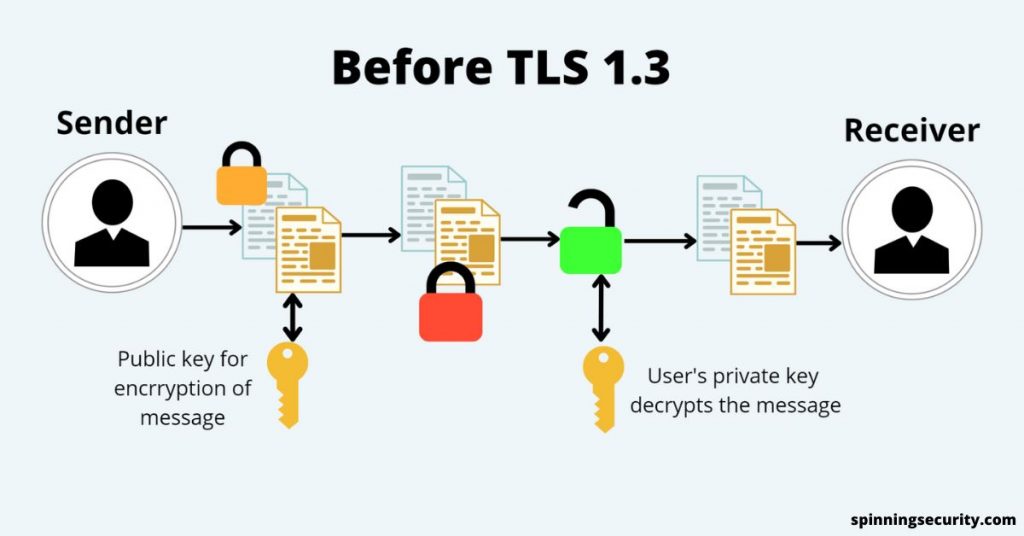Cybersecurity is more than just a necessity for modern businesses. Data security has been vital, especially with several regulation guidelines worldwide. For example, General Data Protection Regulation is one such guideline that companies need to comply especially in the European Union.
Significantly pandemics have amplified the need for better cybersecurity. According to IBM, the cost of a data breach has increased by $137,000 due to remote work. During the pandemic, many businesses needed to work remotely, leading to a security crisis. Remote work is here to stay, and the risk of data exposure increases.
So, what’s the way out? The answer is public key cryptography!
It is an encryption-based solution that relies on two different sets of security keys public and private keys. Cryptographic encryptions allow you to secure the communication between the client and server for secure data exchange.
Here we will discuss everything you need to know about public key cryptography.
What is public key cryptography?

Encryption is all about keeping your data anonymous to hackers and attackers. Take an example of an eCommerce website. If users try to transact on the website without proper encryption measures, the data is susceptible to exposure.
How public key cryptography works?

Using encryptions to secure data is vital. There are two types of encryptions- asymmetric and symmetric. Asymmetric encryptions or public key cryptography have different security keys for the encryption and decryption processes. On the other hand, symmetric encryptions have the same security keys.
The public key cryptography process takes place in five steps,
- The first step is to generate security keys (Public and private)
- The next step is to exchange the security keys, which takes place between the sender and receiver
- The sender’s data is encrypted through a public key which is then sent to the recipient
- The encrypted information is sent to the recipient, and a private key is used for decryption
It is essential to understand the difference between public and private keys. So, let’s discuss how security key pairs are different and their impact on cryptographic encryptions.
Difference between public and private key

Public and private keys are a pair of security keys that help encrypt or decrypt data. In other words, they work similar to your house keys but to secure data instead of physical, for example, ins. For example, private and public key pairs are responsible for handling session key transmission in an RSA-based encryption system.

RSA key exchange allows the session key to be encrypted by a public key and sent to the server. The process is like a confidential letter sent for readers’ eyes only.
So, the recipient needs a private key to decrypt. The roles were reversed with TLS 1.3, and asymmetric encryptions in the handshake stopped.
If you are unaware of a handshake, here is an example. Take an example of the postman, the sender of the post will send it through a postman, and the recipient receives it. A handshake is similar to a postman that acts as a middle entity.
Modern systems use security keys pairs for authentic digital signatures. So, whenever a certificate is to be verified for data access or authenticity, the public key associated with the signature is traced back up the chain of trust. So, there is no denying that security keys are like opposite poles on a magnet, but they are essential for encryption.
Public key cryptography has several use cases and applications. For example, SSL certificates are used to secure communication channels between browsers and servers. On the other hand, symmetric encryptions enable the security of the data exchanged.
SSL/ TSL certificate ensures that the data sent to the recipient is intact. Similarly, there are other applications of public key cryptography.
Top applications of public key cryptography

Digital signatures
Public Key Cryptography is extensively used for digital signatures. It is a sign of trust and identity for any software or application. A digital signature ensures the authenticity of software and its publishers and ensures code integrity.
Users can generate a digital signature using the private key and hashing algorithm and it verifies the publisher’s identity. For example, software or application data gets encrypted through a private security key. Further, the file receives hashed using the hashing algorithm to create a digital signature.
Hash is a string of random numbers and alphabets that secures the data from attackers. Data anonymity is so strong.
Data encryptions
Public key cryptography enables data encryptions to keep it anonymous. For example, you can use it to transform plaintext data into a format that is not understandable to hackers. It scrambles the information into smaller and unreadable but is further decrypted into the desired message.
Further, a decryption device decrypts the information and passes it on to the intended receiver or application. The decryption process needs public keys provided by the recipient.
User authentications
User authentication is essential for the integrity of systems and to ensure that users’ credentials are not misused. Especially it is vital to ensure that the public-key holder is the intended recipient of the message. Public key cryptography allows senders to enhance security through hashing. In addition, it enables users to secure their credentials through hashing algorithms.
Digital certificates
Many different digital certificates use public key cryptography. It involves additional steps like key generation, verification, certificate issuance, etc. Digital certificates help businesses establish secure interactions for users through encryption-based protection. Some of the digital certificates used in the market are,
- SSL certificates are standard encryption-based certificates used by businesses to secure their websites.
- Wildcard SSL certificates – If multiple subdomains are installing an SSL certificate for each of them can prove costly. A wildcard SSL certificate allows you to use one certificate for all the subdomains.
- Code signing certificates are a form of digital certificate that allows software publishers and app developers to authenticate identity. For example, a code signing certificate will enable users to verify the identity of software publishers.
- EV code signing certificates- Extended validation helps with higher trust among users for enterprises and businesses. EV code signing certificates are issued after comprehensive vetting of the companies, including legitimacy, business location, and more.
Now that we know different use cases for public key cryptography, let’s discuss some benefits.
Top benefits of public-key cryptography

Public key cryptography has several benefits, including enhanced authentications, non-repudiation, and confidentiality.
Non-repudiation
Public key cryptography ensures that the sender can’t deny sending the message. Similarly, the recipient of the message can’t refuse the delivery. It helps establish the exchange of data and acts as proof of delivery. This is beneficial, especially for the identification of data sources.
Higher integrity
Imagine a software available on the internet for free as an alternative to the original paid one. Such fake copies can have malicious code injections that damage the user’s device or gain control. Public key cryptography ensures that the software’s source code does not get compromised.
It uses hashing process to create a hash of the source code file, and another hash is with the user’s bundle. If both the hash codes match, the software is authentic for downloads and installation.
Better confidentiality
The exchange of sensitive information needs high-end security. Exchange data access restrictions and confidentiality is key in the modern world. Take an example of the Morrison supermarket chain. It suffered a massive internal attack where an internal employee leaked payroll data of the entire workforce.
Public key cryptography enables advanced confidentiality through encryptions. Furthermore, it is not easy to execute a data breach due to the asymmetric nature of encryptions.
We discussed public key cryptography, its working, benefits, and the difference in security key pairs and applications, but it’s incomplete without the challenges.
Challenges of Public Key Cryptography
Like every other technology solution, public key cryptography has its caveats. Knowing them will help you improve the overall performance of security systems and optimize protection.
Performance bottlenecks
Public key cryptography uses a complex mathematical algorithm for encryptions. So, you need a reliable Public Key Infrastructure (PKI) system to ensure that there are no performance bottlenecks. PKI combines software, encryption technologies, and services that enable secure communications across business transactions.
It is essential to have a robust PKI system to ensure high performance or your system may have security but sluggish performance. Performance becomes vital, especially when 75% of your customers can choose a competitor over your business due to a slow website.
Third-party certifications
Third-party, public-key systems are common in the market. However, the authenticity of such services is often susceptible without proper vetting. Take an example of a private email between you and your psychiatrist. There can be a breach if the psychiatrist system’s access is to the organization’s third-party services.
Therefore it becomes paramount to vet the trustworthiness of the certificate authority. If the root certificate issued is from a trustworthy CA, the risk of exposure minimizes.
Compromising scenario
Hackers are always on the lookout for new ways to execute a breach. There are two practical approaches to breaking public-key systems. One is to crack the underlying algorithm and generate fake security key pairs for data access.
Fortunately, there is no way for hackers to crack algorithms that quickly as it has a complex mathematical equation at their heart. On the contrary, the second approach can be risky for users. It involves cyber attackers targeting encryption.
Modern 256-bit encryptions are not easy to break. Public key cryptographyfaces a challenge, though the evolution of encryption technology ensures that there will be an answer to offer more resilience to brute force attacks.
Conclusion
Public key cryptography has its challenges. However, it is the best way to secure modern websites and apps. The growing number of cyber-attacks has amplified the need for better security measures. It has many use cases across the business domain.
Which one suits you best depends on what type of business needs. So, start securing your business with public key cryptography for better security, reliability, and a secure experience.
Also Read: 7 Best Tips to Protect Yourself from Online Scams – 2022
- Understanding Backflow Testing and Annual Fire Alarm Inspections: Essential for Safety and Compliance - April 1, 2025
- Preamplifiers – Significance, Types, Benefits - January 10, 2025
- The Science of Bass: Understanding How Subwoofers Work - January 10, 2025

